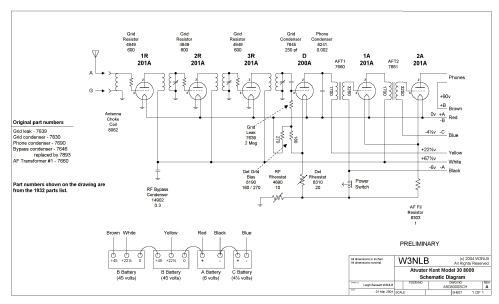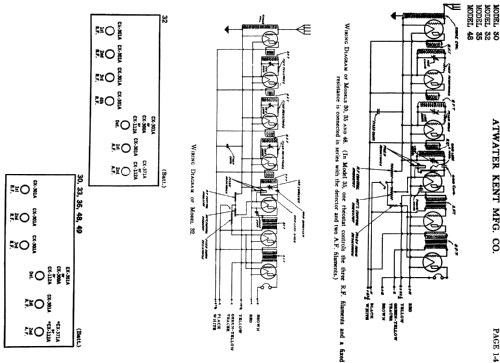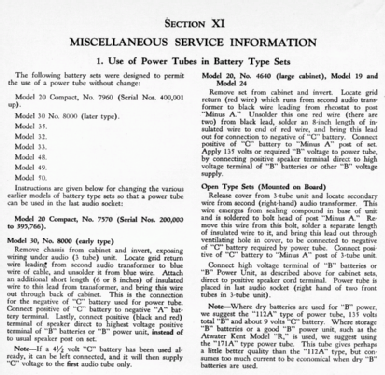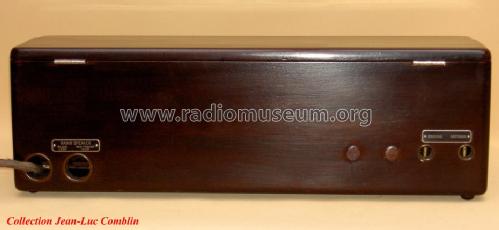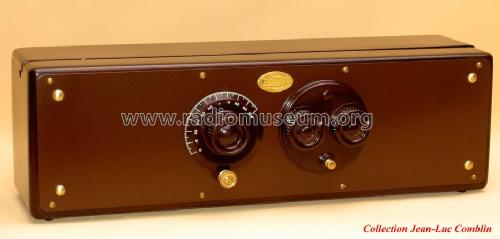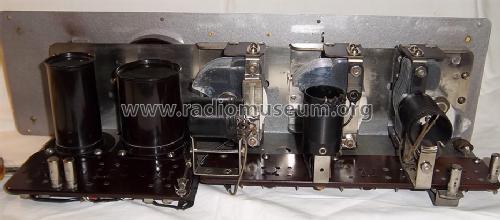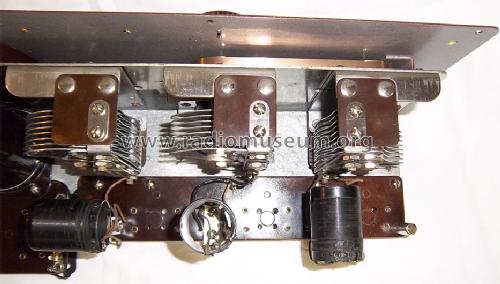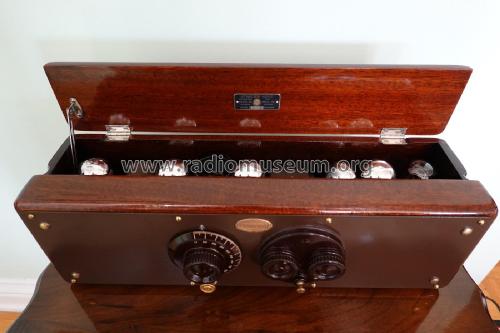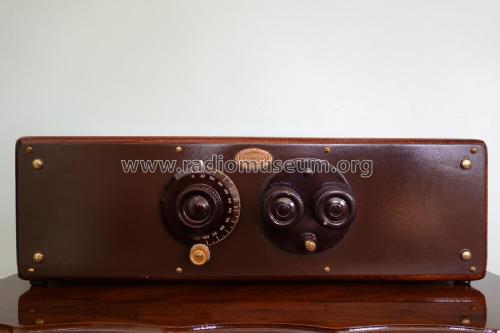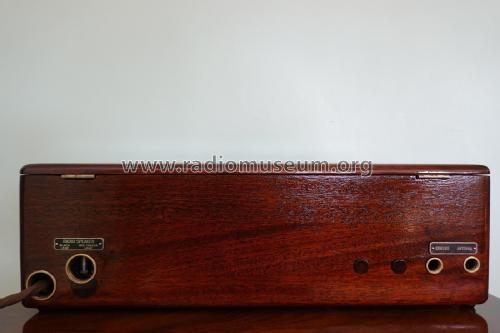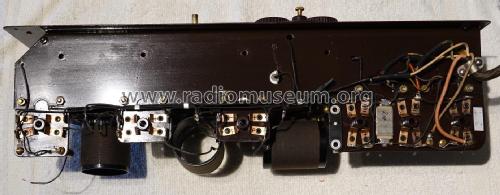8000 Model 30 late, two rheostats
Atwater Kent Mfg. Co.; Philadelphia, USA
- Pays
- Etats-Unis
- Fabricant / Marque
- Atwater Kent Mfg. Co.; Philadelphia, USA
- Année
- 1926
- Catégorie
- Radio - ou tuner d'après la guerre 1939-45
- Radiomuseum.org ID
- 74614
Cliquez sur la vignette du schéma pour le demander en tant que document gratuit.
- No. de tubes
- 6
- Principe général
- Récepteur TRF - sans réaction (pas régénératif); 2 Etage(s) BF
- Circuits accordés
- 3 Circuits MA (AM)
- Gammes d'ondes
- PO uniquement
- Tension / type courant
- Piles (rechargeables ou/et sèches)
- Haut-parleur
- - Ce modèle nécessite des HP externes
- Matière
- Boitier en bois
- De Radiomuseum.org
- Modèle: 8000 Model 30 [late, two rheostats] - Atwater Kent Mfg. Co.;
- Forme
- Modèle de table boitier avec vouvercle
- Dimensions (LHP)
- 502 x 156 x 164 mm / 19.8 x 6.1 x 6.5 inch
- Remarques
-
Metal panel and a L-shaped chassis. Single moulded (UX) sockets for the 3 RF stages, and a moulded bakelite panel serving as the chassis for the detector and the two audio stages. This chassis panel also formed the sockets for the three (UX) tubes.
- Poids net
- 5.6 kg / 12 lb 5.4 oz (12.335 lb)
- Littérature
- Radio Manufacturers of the 1920s, Vol 1
- Schémathèque (2)
- Le Guide du Collectionneur TSF Biraud/Foster, Vol. I (page 102)
- Auteur
- Modèle crée par Konrad Birkner † 12.08.2014. Voir les propositions de modification pour les contributeurs supplémentaires.
- D'autres Modèles
-
Vous pourrez trouver sous ce lien 507 modèles d'appareils, 331 avec des images et 332 avec des schémas.
Tous les appareils de Atwater Kent Mfg. Co.; Philadelphia, USA
Collections
Le modèle 8000 fait partie des collections des membres suivants.
Contributions du forum pour ce modèle: Atwater Kent Mfg. Co: 8000 Model 30
Discussions: 1 | Publications: 1
Receiver sensitivity is around -50 dBm over the broadcasting AM band (525 – 1500 kHz) with more than 10 dB (S+N)/N ratio. Noise level is around -65 dBm.
Compared to the Atwater Kent models 20 and 20C, with similar components, the receiver sensitivity is reduced with at least 10 dB, even if 6 tubes are used instead of 5. The problem is the alignment of the tuning circuits with a single mechanical control. In practice, for a perfect tuning, there are few % variation from a tuning circuit to another, in special in the first stage where a certain antenna tuning is preferable. However, an easier tuning is done with the model 30 than with previous tree dial models.
More details and measurements are presented in the attached pdf file.
Pièces jointes
Serioja Tatu, 22.Dec.24
